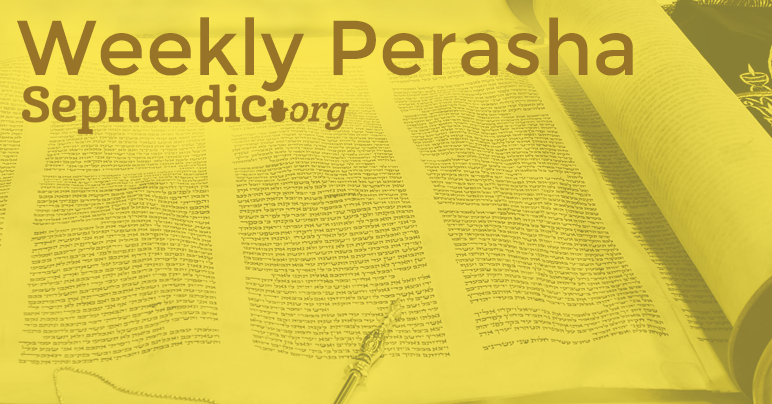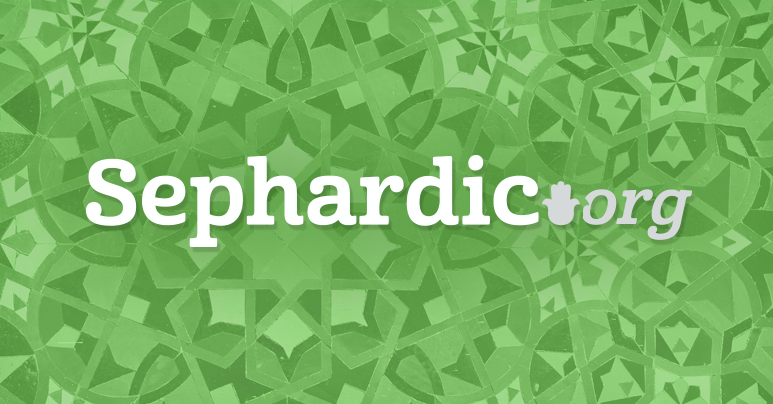
PEQUDE - 18 UNIFICATIONS PRECEDE THE REVELATION OF THE SHEKHINA
The Torah assigns various names for the portable structure constructed by Besalel, Aholiav and the skilled artisans of Israel. These include the “Mishkan” - Dwelling Place and the “Ohel Mo’ed” - Meeting Place. These terms characterize the structure’s primary function - to act as a precise physical edifice to reveal the Divine Presence or the Shekhina within the camp of Israel. It was on Rosh Hodesh Nisan - at the start of the second year after the exodus - that we are told that Moshe erected the Mishkan. The verse tells us what occurred next - “The cloud covered the Ohel Mo'ed and the Kavod of Hashem filled the Mishkan." 1 This was in fulfillment of a verse found earlier in Parashat Terumah - "They shall make me a sanctuary and I will dwell amongst them". 2 Our Sages teach that this revelation was specifically preceded by the 18 times the Torah mentions that all associated sanctuary work was done “according to what YHVH had commanded Moshe”. It behooves us to examine the words of our Sages as it relates to the significance of this repetition. We will discuss why it was an essential element in preceding the revelation of the Divine Presence in the Mishkan. Furthermore, we hope to advance the premise that this requirement of “18 commandments” serve as the prototype in preempting Divine Revelation. It will hopefully become clear as to why the Sages have inserted prayers that they themselves equate with this “facet of 18” into positions that form an integral part of our liturgy.
18 UNIFICATIONS PRECEDE THE KAVOD OF HASHEM FILLING THE MISHKAN
In no fewer than in three original sources do we find the teaching of our Sages - that the refrain appearing in our Parasha - Kaasher Siva YHVH Et Moshe - “As the Lord commanded Moshe” - occurs precisely 18 times. 3 There are 18 commands or Savot that appear in advance of the Kavod Hashem filling the Mishkan. This Kavod is a synonym for the Shekhina or Divine Presence. 4 Our Sages have already taught us that the word Sav has it's origins in the idiom of Savta -spelled Sadi Vav Vav Taph Alef - which connotes joining together. 5 We can now properly elucidate these 18 repeated Torah expressions - “As the Lord caused a unity via Moshe.” Our Rabbis teach that there is a progression of the Divine light as it makes it’s way down to the Shekhina which is the last level in the hierarchy of spiritual channels. It is the reservoir to where all Divine light is gathered, descends and is distributed from. In a certain respect it is compared to the moon which has no light of her own. Hence she is considered a spiritual female channel who is dependent upon her male counterpart who is situated directly above her. This male aspect or the Yesod is called -The Life of the worlds - or Hai HaOlamim - 6 Eighteen mini-unifications need to be aroused via this male principle prior to its unification with the Divine Presence. This is the reason as to why the Yesod is known as Hai or life - which has a numerical value of 18. This is the precursor for the Shekhina to be able to reveal the Divine light from above. Herein lies the secret of the refrain "As the lord caused a unity via Moshe" which is repeated 18 times. Moshe is related spiritually with the sun or the male principle - 7 making it obvious why the unifications must be effectuated through him. These 18 unifications serve as the forerunner to Moshe erecting the edifice and the Kavod of YHVH filling the Mishkan.
AMIDA AND THE 18 BERAKHOT - 18 VERTEBRAE
Curiously these same rabbinic sources relate the 18 benedictions of the Amida to the 18 refrains in Pequde. 8 We know that the morning Shahareet prayer service begins with the supplications of a servant of Hashem who is standing on the lowest of four spiritual levels. As he advances higher in the service he gathers up all the special sparks extant at each level until his person and what he has gathered stand ready to enter the King’s chamber at the start of the Amida. At that point he begins the process of effectuating 18 mini-unifications via the Berakhot that form the Shemonah Esreh. It also essential that he make use of the 18 vertebrae of his spine to help erect the Shekhina - elevating her into the proper spiritual position to later unify with the male principle during the Berakha of Sim Shalom. The Talmud teaches that a precursor or in conjunction with the 18 blessings it is equally essential that one must bow at four points in the Amida. This must be performed to the extent that all 18 vertebrae of his spine protrude. 9 The Talmud associates these 18 benedictions and the 18 vertebrae of the spine. 10 The spine transmits the thoughts to unify that emanate from one’s Daat thru the 18 vertebrae- all the way down to the Yesod - giving the latter Hai or life. The Rashash explains that both are necessary to precede the unification with the Shehina in the last blessing of Sim Shalom. As part of the Hazara - immediately preceding the final bow in the midst of the penultimate Berakha of Ve’al Koulam - the Sepharadim offer praise and recognition to the Yesod by explicitly calling out Barukh Hai HaOlamim. All this in appreciation of the Hai - as the source of blessing in erecting the Shehina prior to their unification in Sim Shalom. Furthermore the Talmud teaches that one be careful and not interrupt the systematic structure of unity known as the Amida. This is in the secret of its teaching that one not interrupt one’s prayer even in the face of a snake wrapping itself around one’s heal. 11 According to the Zohar - the snake being a reference to the Qelipah or spiritual husk of the Nahash that seeks to disrupt the unity by wrapping itself around the Ekev which is an aspect of the Yesod. The structure must not be interrupted - we must not be submissive to this negative husk. 12
18 DIVINE NAMES IN TEHILLIM 29 - PRECEDING QABALAT SHABBAT
The sources from the Talmud Yerushalmi cited earlier also equate the 18 Divine Names appearing in chapter 29 of Tehillim with the 18 refrains - Kaasher Siva YHVH Et Moshe found in our Parasha. 13 Inspired by the Talmudic accounts of the scholars who would go out late Friday afternoons to welcome the Shekhina - identifying it with the Shabbat Bride or Queen - 14 we accept Shabbat with the refrain Bo’i Kallah - "Come O' Bride”. In our liturgy it appears in the last stanza of the Lekha Dodi hymn. It is explicitly preceded in our liturgy by Psalm 29 - Mizmor LeDavid Havu LaYHVH - in order that we evoke the 18 unifications or Divine Names required prior to her arrival. This apparently is in conformity with the requirement to arouse the Hai prior to the appearance of the Shekhina. The Zohar explains that these eighteen refrains of the divine name YHVH prepare the unity between the Yesod and Malkhut. This is the secret of the Talmudic teaching that Haqadosh Barukh Hu rides on a light cherub and flies in eighteen thousand worlds. Namely that the spiritual funnel of Yesod (Haqadosh Barukh Hu) carries or channels the 18 unifications in preparation of uniting with the Shekhina. 15
THE LULAV IS THE SPINAL COLUMN THAT IS WAVED IN 18 DIRECTIONS
R. HaAri teaches that we wave the Lulav along with the other Minim on Sukkot in preparation for the great unity that is to take place during Musaph of Shemini Aseret. 16 The Midrash teaches that the Lulav is synonymous with the spiritual spinal column. 17 The Zohar compares it with the 18 vertebrae which are essential in the preparation of the spiritual channels prior to their unification in the Berakha of Sim Shalom. 18 More correctly the Lulav is related to the Yesod which extends upwards to arouse the Daat to send forth Hasadim via its 18 wavings towards the Shekhina which dwells at that time by the celestial chest. 19 Hence the Mishnaic ruling restricting the use of a Lulav with palm leaves that are severed which would reflect a blemish in its spiritual role to reveal the Hai! 20
KING DAVID - MANIFESTS THE SHEKHINA AFTER ESTABLISHING HIS HAI
We know that King David traversed a path in life culminating in his position as King in Israel. He is known by our Sages as the patriarch associated most with the Shekhina. 21 As we have learned in the name of Rish Lakish that the patriarchs are the chariots for the spiritual grades above. 22 We see King David taking on the role as the honored guest on the seventh day of Sukkot. This day parallels the spiritual channel of Malkhut - Kingship which is synonymous with the Shekhina. In Tehillim he is referred as the embodiment of Tefilah also associated with the Shekhina. 23 Furthermore, R. HaAri rules that there be no interruption between the 18 verses of the Yehi Khevod and the Mizmor Ashre said each morning. The latter begins Tehila LeDavid ; a reference associating the King with the Shekhina. The previous 18 verses must unify with the Mizmor to stamp the latter with Hashem's seal of Emet. According to R. HaAri any interruption between the 18 verses and the Shekhina associated here with King David causes a blemish in the upper worlds. 24 It appears to me that King David understood his role and hence undertook to faithfully marry 18 wives 25 and fought in 18 battles 26 to establish the Hai-as a precursor to building the Bet Hamikdash or permanent home for the Shekhina.
DAVID THE KING IN ISRAEL LIVES AND ARISES
We have shown that the prototype of the 18 refrains - Kaasher Siva YHVH Et Moshe - found in Pequde are to serve as a prototype in our service in establishing a proper place for the Shekhina. We must infuse the spiritual worlds with the Hai in every Amida via proper bowing and recitation of the 18 Berakhot. We should keep this in mind in other liturgical sections of the Siddour. Namely, prior to Ashre and upon the acceptance of the Shabbat each Friday evening. It appears to me that what we have advanced above can be summarized in the sought after Talmudic sign that the moon had been sanctified - David Melekh Yisrael Hai Veqayam - Elucidated as “David is the chariot for the celestial channel of Malkhut or the Shekhina lives via the Hai and then arises. 27 This is synonymous with his position as the King of Israel who sits on the throne as does the Shekhina “sit” on the Kise HaKavod in the upper worlds. 28 A principal feature in the coronation of the Kings of Israel included the monarch seating himself on the throne mimicking or reflecting on this manner the Divine Presence. Subsequent to anointing Shelomo as King the verse states - “And also Shelomo sits on the throne of the Kingdom”. 29 And so Yehu - after being brought from the House of YHVH - “”And he sat on the throne of the Kings.” 30 Other references abound in Scripture to this feature in establishing the King. 31 Furthermore the revelation of the Shekhina must be preempted with the Hai and only subsequently VeQayam will she arise and be erected. It appears to me that this is the secret behind the acclamation of Yehi HaMelekh - “Life to the King” that was intricate to the ceremony in the coronation of the Kings of Israel. Scripture details respective coronations of the Kings - Shaul, Shemuel and Yehu 32 which culminate in the people calling out Yehi HaMelekh - Namely the Hai is what establishes his Kingship below and the parallel revelation of the Divine Presence above. When R. Eleazar Ben Azarya was installed as the Nasi or in essence as the rabbinic king of Israel he was endowed with the 18 rows of his beard turning white. 33 We are taught that Mashiah Ben Yoseph who preempts Mashiah Ben David is destined to die. 34 The former is associated with the Yesod or male channel and the latter with Malkhut or the female channel synonymous with the Shekhina. R. HaAri teaches that it is incumbent upon us to meditate during the Amida in the Berakha of Et Semah - that Mashiah Ben Yoseph not die but remain alive. 35 As the physical manifestation of Hai HaOlamim - or the Life of the Worlds - It is crucial for us to assist him in this endeavor in attaining the Hai. Surely it’s success will assist as a precursor for the establishment of the reign of Mashiah Ben David which will be a reflection of the return of the Divine Presence here below. These ideas succinctly parallel the teachings of the 18 refrains and the subsequent erection of the Mishkan by our “first king” 36 Moshe Rabbenu.
Shabbat Shalom
Victor Bibi








